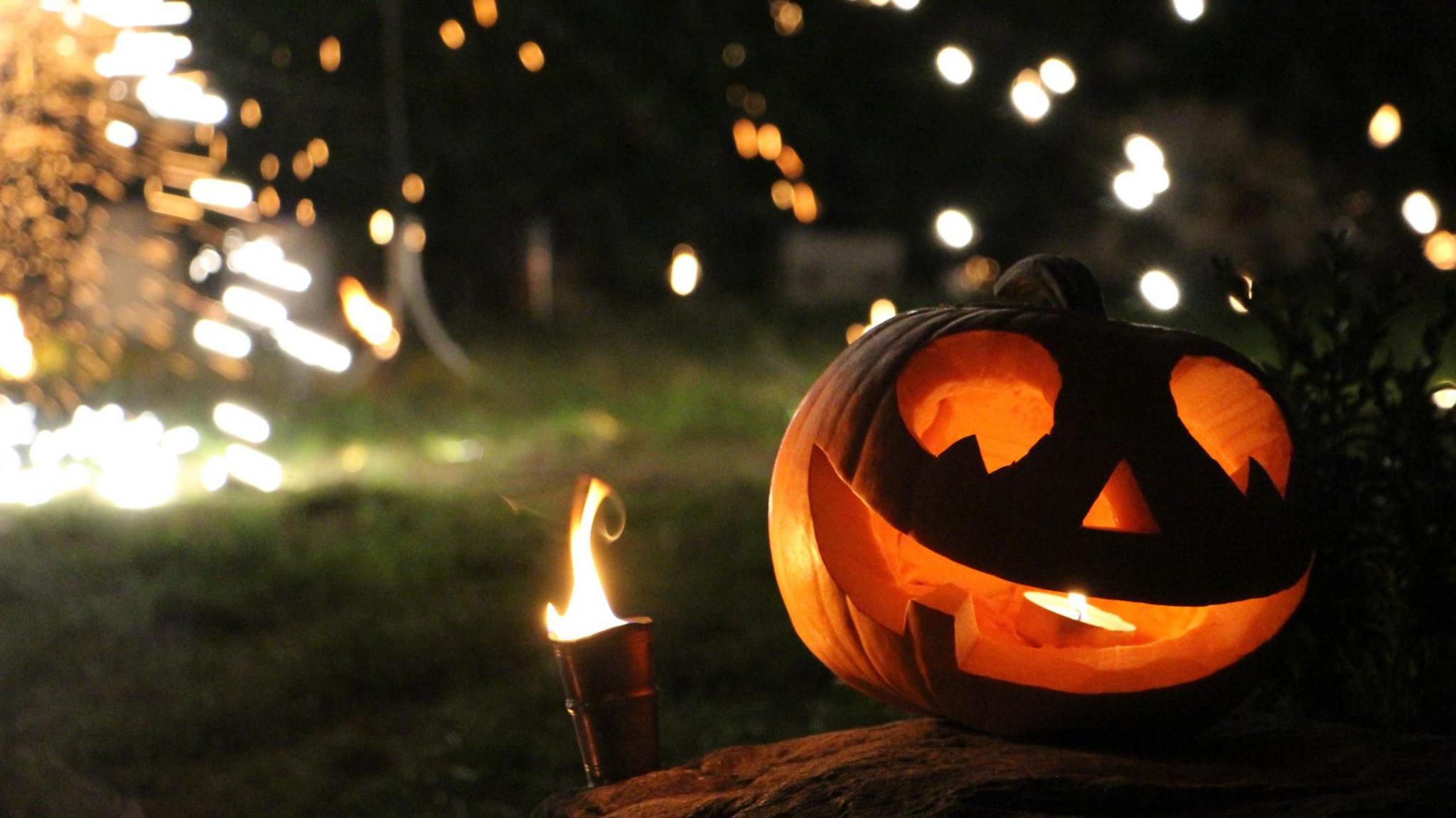'I'm related to the gunpowder plotters'

Tony Beacock is related to three of the men who conspired to blow up Parliament
- Published
Another year, another bonfire night and, as we prepare to enjoy and celebrate the spectacle, the daring plot it represents is often forgotten. But, for Tony Beacock, it will always be remembered, due to his family connection to the plotters.
In 1605, a group of 13 Catholics plotted to blow up the Houses of Parliament in London with, King James I inside, and take control of the country.
The leader of the Plot was Robert Catesby. The man in charge of blowing up Parliament was Guy Fawkes.
The first conspirator to be recruited to the group by Catesby was John Wright, who lived at Twigmoor Hall near Scunthorpe, North Lincolnshire.
John Wright's brother Christopher would later join the group, along with his brother-in-law Thomas Percy.
"John and Christopher are my 12th times great uncles," said Mr Beacock who has spent a lot of time studying and researching his family tree.
The 29-year-old, who lives near Hull, said John and Christopher Wright's mother was "locked away for her religious views", which he suggests could have been one of the reasons why they became involved in the plot.
"I know Guy Fawkes was very good friends with John and Christopher Wright and they actually went to school together in York but I think they all met at Twigmoor Hall," he said.
"Twigmoor Hall is known throughout the country for being linked to the Catholic denomination and it plays a big part in the plot.
"It was maybe like an HQ for them."
The conspiracy was developed at the Manor House at Ashby St Ledgers, Northamptonshire.
However, Dr Ewan Roger, principal record specialist at the National Archives, said it was possible some of the early stages of the plot would have been devised at Twigmoor Hall.
"I don't think it's been really fully established, but the earliest murmurings and discussions may well have taken place there," he says.
"I've heard the property itself is full of tunnels and secret priest holes."
Lincolnshire's Gunpowder Plot connection
The Plot eventually saw the conspirators put 36 barrels of gunpowder in a cellar underneath Parliament.
However, one of the plotters wrote an anonymous letter to a friend in Parliament, Baron Monteagle, to warn him about the Plot. The letter reached the King.
The King's men searched the cellars and found Guy Fawkes dressed in a cloak and hat with the barrels of gunpowder. Fawkes was arrested and the Plot was foiled.
"John and Christopher Wright continued for a few days trying to escape London, heading North West," Mr Beacock said.
"They ended up sieged at Holbeche House".
The brothers were among those killed in a shootout with King's men at the property in Staffordshire.
Historian Tracy Borman said, after the incident, the King "made it law that, every fifth of November, the people in his kingdom must celebrate the foiling of the gunpowder plot".
That law was later repealed, but Ms Borman said: "By then, the celebrating of Bonfire Night, as we call it, had become such an ingrained tradition that people carried on.
"And I imagine people will continue to do so long into the future."
Mr Beacock said: "It just makes me think, 420 years ago these people were so serious and they were willing to risk their lives for their cause.
"They stood by what they believed, even going against the law."
Listen to highlights from Lincolnshire on BBC Sounds, watch the latest episode of Look North or tell us about a story you think we should be covering here, external.
Download the BBC News app from the App Store, external for iPhone and iPad or Google Play, external for Android devices
Related topics
- Published5 January

- Published31 October

Related internet links
- Attribution